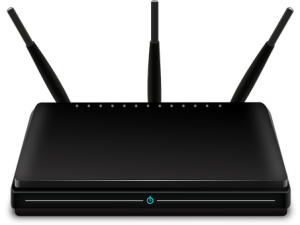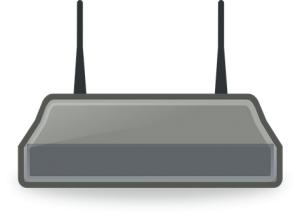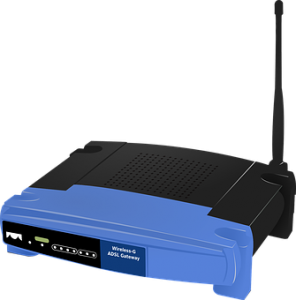Router Setup
In an increasingly connected world, our reliance on the internet is stronger than ever. Whether for streaming our favorite shows, engaging in virtual meetings, or simply browsing the web, a seamless online experience begins with a properly set up and configured network. At the heart of this network lies a critical piece of hardware: the router. From a basic router setup to a more advanced wireless router setup, your router acts as the gateway that links your devices to the internet, ensuring that you have a strong, secure, and reliable connection.
 But let’s face it, for many, the process of setting up a new router can seem daunting. The array of cables, ports, and technical terms can quickly become overwhelming, leading to confusion and frustration. That’s where this guide comes in. Designed to simplify the process, we’re here to walk you through a step-by-step guide on router setup, showing you how to get your network up and running without the stress. Furthermore, we will delve into the detailed process of configuring your router’s settings, ensuring that your network is not only operational but optimized for your specific needs.
But let’s face it, for many, the process of setting up a new router can seem daunting. The array of cables, ports, and technical terms can quickly become overwhelming, leading to confusion and frustration. That’s where this guide comes in. Designed to simplify the process, we’re here to walk you through a step-by-step guide on router setup, showing you how to get your network up and running without the stress. Furthermore, we will delve into the detailed process of configuring your router’s settings, ensuring that your network is not only operational but optimized for your specific needs.
Whether you are a tech-savvy enthusiast looking to fine-tune your network or someone setting up a router for the very first time, this guide is crafted for you. We will demystify the terminology, clarify the steps, and provide practical tips to make your router setup experience smooth and straightforward.
So, let’s embark on this journey together and transform that brand-new router from a box of mysteries into the powerhouse of your home or office network. Stay with us as we guide you from unboxing to surfing the web with confidence and ease.
Wireless Router Setup:
Embarking on the journey of setting up your wireless network can be an exciting experience. A new router promises faster, more reliable internet connectivity for all your devices. However, navigating the wireless router setup process can also be a bit daunting, mainly if you’re doing it for the first time. Not to worry—this step-by-step guide is designed to walk you through setting up wireless router with ease and confidence. Let’s get started!
- Unbox and Inspect Your Router: Take your new wireless router out of the box and check to ensure that you have all the necessary components. This typically includes the router, a power adapter, and an Ethernet cable.
- Find the Ideal Location: Choose a central and elevated location in your home for your wireless router setup. This helps to ensure optimal signal strength throughout your living space.
- Connect to Your Modem: Using the provided Ethernet cable, connect your wireless router to your modem. Typically, this cable goes into the port labeled ‘WAN’ or ‘Internet’ on your router.
- Power On the Router: Connect the power adapter to your router and plug it into a wall outlet. Give it a few moments to fully boot up.
- Access the Router’s Admin Page: On a computer or mobile device, open your favorite web browser and enter the router’s IP address (found in your router’s manual) to access the admin page for setting up wireless router.

- Log In to the Routers Admin Page: Using the default username and password (usually stated on the bottom of the router or in the manual), log into the router’s admin page.
- Configure Network Settings: Within the admin page, navigate to the wireless settings section. Here you will set your Network Name (SSID) and choose a security option, usually WPA2 or WPA3. Create a strong password for your network during this part of the wireless router setup.
- Update Your Router’s Firmware: Manufacturers often release updates to improve performance or security. Check for updates in the admin settings and install if available.
- Customize Additional Settings (Optional): For those looking to further tailor their network, this step involves setting up features like parental controls, guest networks, or Quality of Service (QoS) settings.
- Save and Test Your Connection: After configuring all settings, save your changes and reboot the router if necessary. Finally, connect a device to your new wireless network and test the connection.
- Secure Your Router’s Admin Page: As a final but crucial step in setting up wireless router, change the default admin username & password to something unique and strong to ensure your router’s settings remain secure.
By following this guide, you’ve transformed a daunting task into a sequence of manageable, simple steps. Congratulations, your wireless router setup is now complete, and you are well on your way to enjoying a fast and secure internet connection throughout your home or office. Happy browsing!
How to Configure Router Settings:
Properly configuring your router can make your network more secure and optimize your internet connection for all your devices. Whether it’s changing the network name (SSID), setting up a strong password, or adjusting the security protocols, understanding how to effectively configure router settings is crucial. In this guide, we will draft the steps you need to follow to access router settings and tailor them to your needs. Let’s delve into the details and demystify the process of managing your wireless router settings:
- Access Router Settings: To begin, you need to access router settings via a web browser on your computer or mobile device. Typically, this involves entering your router’s IP address (often found on the back of the router or in the manual) into your browser’s address bar.
- Log In to Your Router: After you’ve navigated to your router’s IP address, you will be prompted to log in. Use the default username and password delivered by your manufacturer (unless you’ve changed them) to log in and access router settings.

- Navigate to Wireless Router Settings: Once logged in, look for a tab or section in the interface that is labeled ‘Wireless’ or ‘Wireless Settings.’ This is where you’ll be able to modify your wireless router settings.
- Configure Network Name (SSID): In the wireless router settings, you can modify the Network Name (SSID) to something unique and recognizable. This is the name you’ll see when you look for available Wi-Fi networks on your devices.
- Set Up a Strong Wi-Fi Password: While still in the wireless router settings section, set a strong, unique password for your Wi-Fi network. This is critical for keeping your network secure.
- Choose the Right Security Protocol: Select a strong security protocol, typically WPA2 or WPA3, in your router settings. This encrypts the data that flows through your network, keeping it secure.
- Configure Additional Features: Most routers come with additional features like parental controls, guest networks, and Quality of Service (QoS) settings. Take the time to configure router settings according to your needs.
- Update the Router Firmware: Manufacturers regularly update the router’s software to improve performance and security. Check for firmware updates in the router’s settings and install if available.
- Save and Apply the Changes: After you have configured your desired router settings, always remember to save and apply the changes. Your router may need to reboot for these changes to take effect.
- Secure Your Router’s Admin Access: As a final and critical step, change the default admin username and password used to access router settings to something strong and unique. This ensures that only certified users can modify your router’s settings.
By meticulously following these steps, you will not only have successfully configured your router’s settings, but you will also have taken major strides in enhancing the performance and security of your network. Remember that these settings are not static; you can—and should—regularly log in to your router’s admin page to make updates as needed, keeping your network in peak condition.
Conclusion:
 In today’s digital age, having a reliable and secure internet connection is more than a convenience; it’s a necessity. This essential connectivity begins with a proper router setup. Whether you’re working from home, streaming your favorite shows, gaming online, or simply browsing the internet, the quality of your experience is heavily influenced by how well your router is set up and configured.
In today’s digital age, having a reliable and secure internet connection is more than a convenience; it’s a necessity. This essential connectivity begins with a proper router setup. Whether you’re working from home, streaming your favorite shows, gaming online, or simply browsing the internet, the quality of your experience is heavily influenced by how well your router is set up and configured.
The router setup process, while perhaps seeming technical and complex at first glance, is something that can be mastered by anyone. As we have walked through in this guide, each step of the setup process can be straightforward and manageable, turning what might appear to be a daunting task into an easily achievable goal. With the right guidance and a touch of patience, you can take charge of your own network, making the phrase “router setup” something empowering rather than intimidating.
Going beyond a basic setup, a wireless router setup allows for enhanced flexibility and freedom in our increasingly mobile and interconnected world. This process enables you to create a network that is not tethered by cables, allowing your devices—and by extension, you—to move freely within your space while maintaining a strong and secure connection. A well-executed wireless router setup is the key to enjoying seamless and expansive internet coverage in your home or office, giving you the freedom to connect from anywhere within your space.
Your router is much more than a mere box with blinking lights—it is the gateway to the world of the internet and the hub of your digital life. A carefully executed wireless router setup is an essential step towards seizing control of your online experience, enabling you to create a network environment that is fast, secure, and tailored to your unique needs and preferences. Here’s to a future of uncompromised connectivity and boundless digital possibilities. To get information on your specific brand router, you can navigate to the website’s Homepage.
